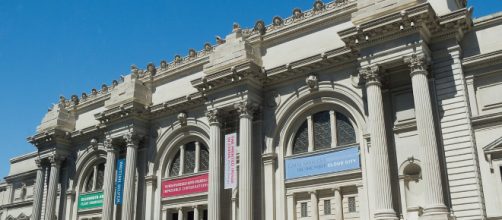Steeped in history and tradition, prized for its rich repository arrayed in gleaming marble halls, the ever-elegant Metropolitan Museum of Art, is taking a new exhibit into the street beginning Sept. 9 under the Met's new leader Max Hollein. Recesses in the outside walls of the Fifth Avenue entryway will house site-specific sculptures commissioned by Hollein.
A new wrinkle on an old face
This show will feature sculptures by Wangechi Mutu of Kenya which, Hollein told the Art Newspaper, will be based on work in the Met collection but look like “fantastic otherworldly narratives.” Of course, outdoor exhibits aren't new at the museum if you count the rooftop garden exhibits that have been going on since 1998.
And displaying sculpture in niches on the face of a building is far from novel. Old Rome did that a lot.
Another maverick leading the Met
Yet, the reaction to Hullein's art-in-the-street idea makes him sound near-revolutionary. The Art Newspaper cited a remark heard at the Met's annual spring media press breakfast - “This is not the Met of Philippe de Montebello” - a reference to a former, ultra-conservative director. Oddly overlooked in the press coverage is a former Met director long known as an upstart - Thomas Hoving – who served for 10 years, beginning in 1967. You can gauge his boldness by the irreverent nod to the museum's Egyptian collection in the title of his memoirs, “Making the Mummies Dance.
” Hoving was also the one who brought the King Tut extravaganza to the Met.
Making the headlines
Hoving was given to making headlines and said as much in his memoir: “I had raised a rumpus in the press early on by stating that running the Met was no different than from running General Motors. I meant it. If you take away the glamor, the museum was just a business.“ As if making Hoving's point, the Art Newspaper reported what it called “a very important milestone.” The Met's president and chief executive Daniel Weiss presented a balanced budget for the first time in three years.
What makes an art museum?
But it was his views of Montebello that seemed to define what constituted an art museum: “I knew he was conservative, but I hadn't realized that he was opposed to what I was trying to do and found out when he told the Houston Post, 'The permanent collection of a museum is everything.
They're what a museum is about. Exhibitions are a passing sensation.' He wanted no razzmatazz, but an only scholarly show, saying, 'A museum is a temple where one escapes the hustle and bustle to reflect in peace and quiet.'” Clearly, Hoving's King Tut blockbuster didn't square with Montebello's image of the Met.
Why here?
One can only wonder what Montebello would say about installing “fantastic otherworldly narratives” in the Met's Beaux-Arts face. I have no problem with it. But what I don't get is why Hullein wants contemporary work at the Met's Fifth Avenue building when the institution already has a building for it - the Met Breuer - further downtown.


